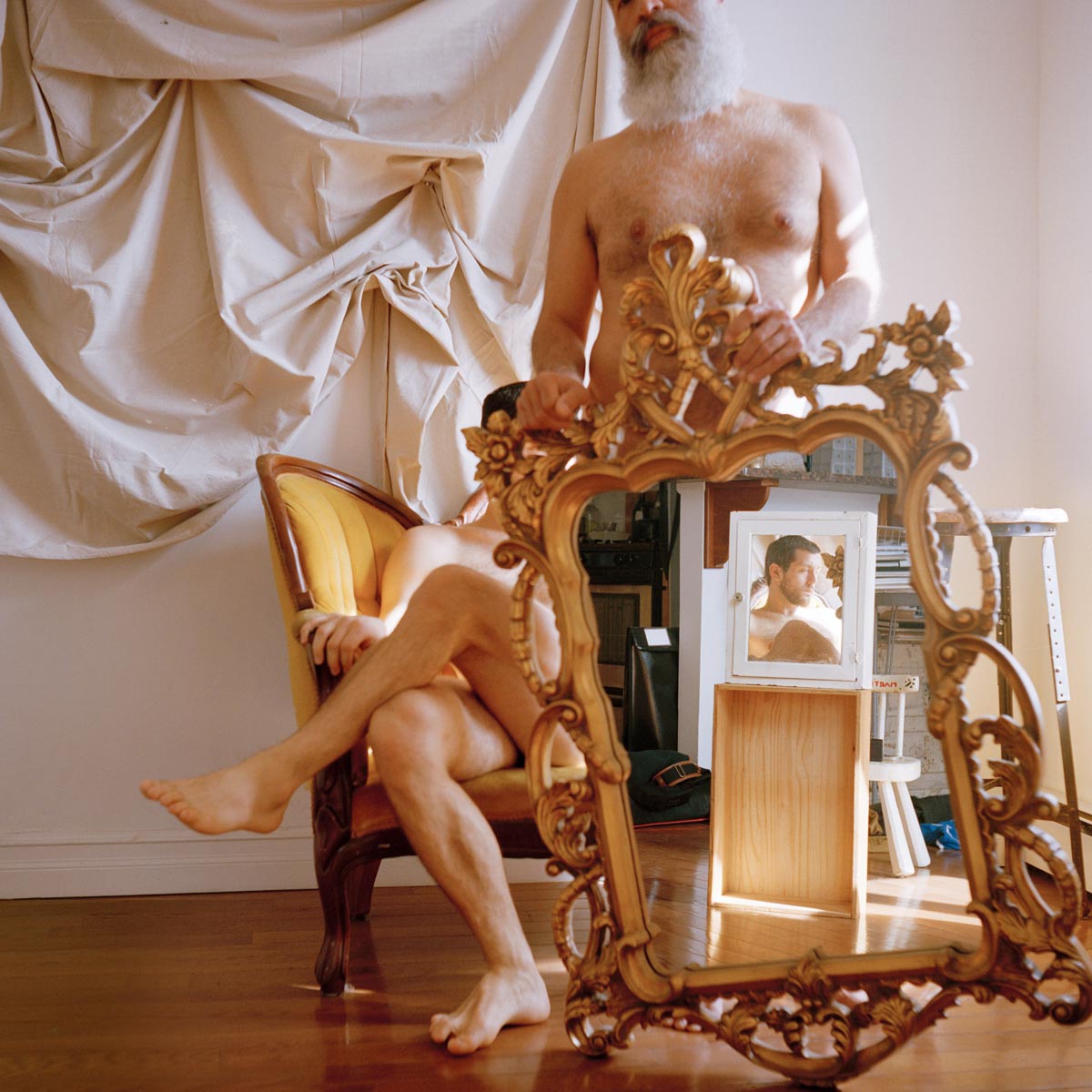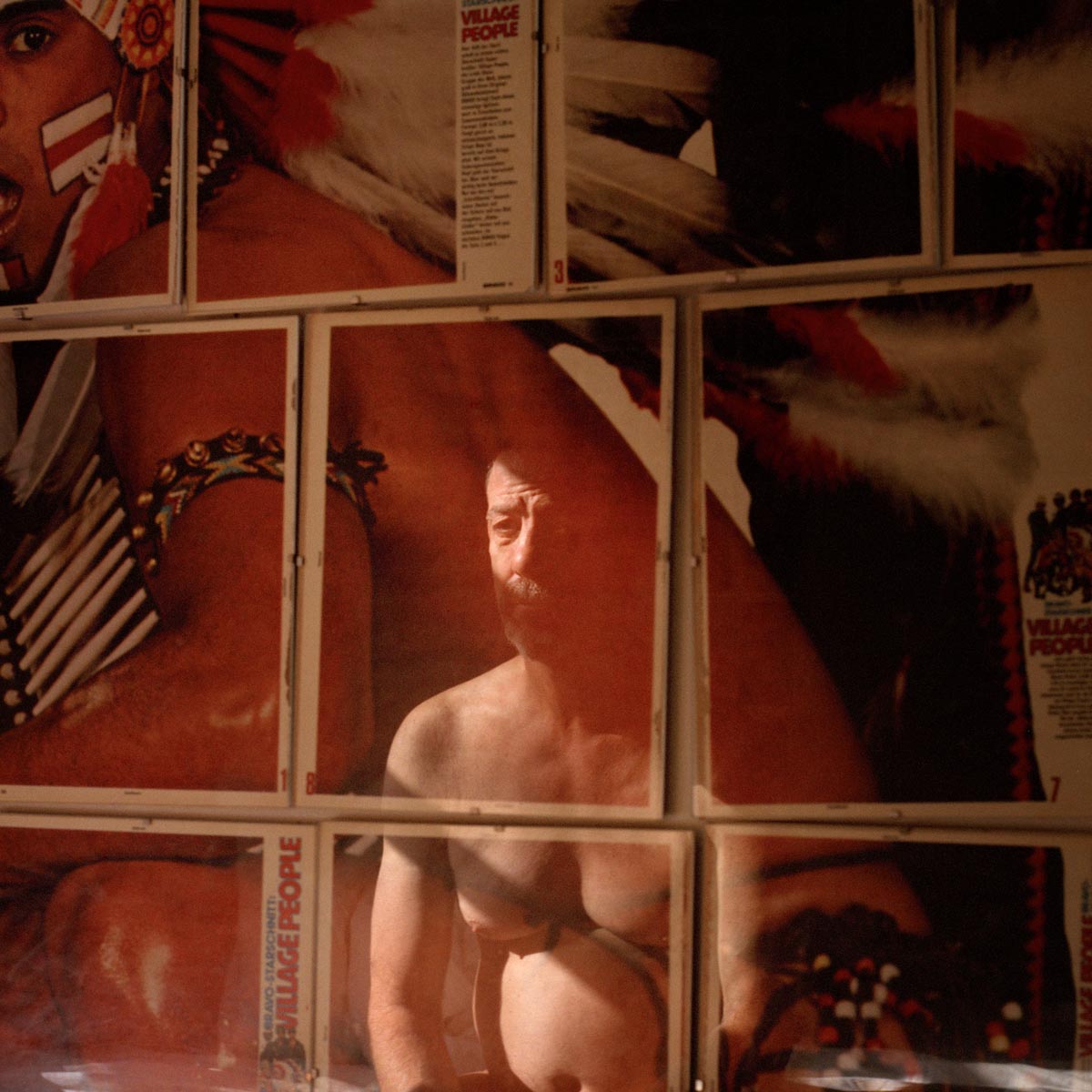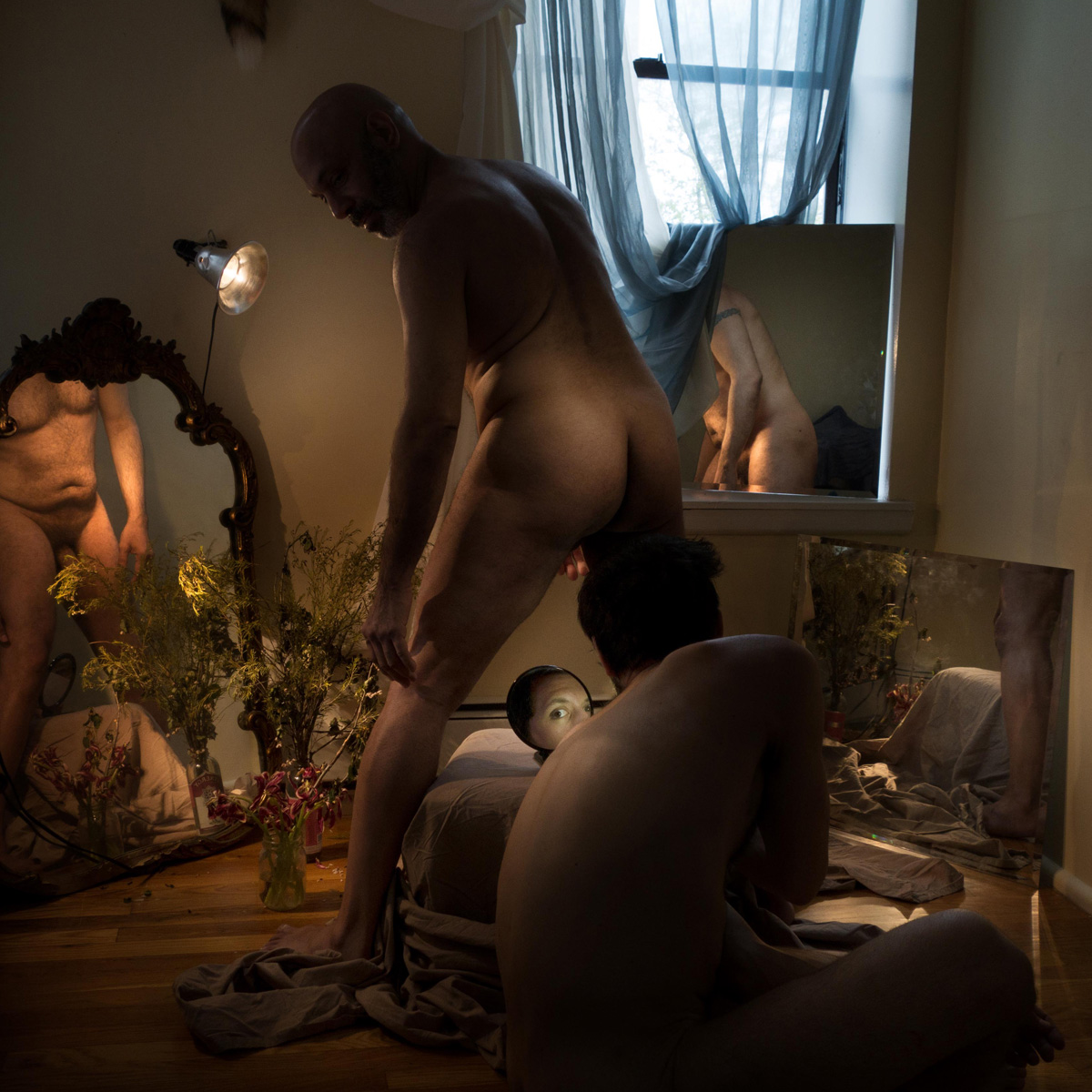In 2018, when Morrocco first published his series Complicit, one of the images was co-opted as a meme without his consent. Now, through his debut NFT sale, the artist is reclaiming his narrative
In a series of intimate self-portraits, twenty-something year old Matthew Morrocco poses with nude, older gay men. The images account for the bulk of Morocco’s debut sale of 55 NFTs, Complicit, launched mid-November. A study of male vulnerability, sexual desire, and the ageing process, the images could scarcely be further from the crypto-bro culture that pervades large parts of the NFT world. And that is precisely Morrocco’s intention.
“The NFT space is very heterosexual and very male, and it can be difficult to navigate as someone who doesn’t fulfil those criteria,” says Morrocco, now 31. “I have other bodies of work that I could have put out, but I chose this one as a real test of how open and accepting the space really is.”
The series was made between 2010 and 2018, when it was published as a book by Matte Editions. It charts Morrocco’s years living in New York City as a graduate, when he would befriend older men online and have sexual encounters with them. When it was first published, it posed difficult questions around ageism in the LGBTQI+ community. Now, it is doing the same in NFT circles.
The length of time between the project’s conception and publication points to the painstaking nature of Morrocco’s work. It was not just a case of one-off meetings with people he met online, but of forming genuine bonds with his subjects. “Most people are not easily vulnerable or comfortable being naked in front of a camera,” he says. “So I really spent time and dug into the relationships with these men to create the work.”
That made it all the more frustrating when the title photograph, a luxuriantly composed shot of Morrocco about to kiss a white haired, bespectacled man named Rolf, was co-opted as a meme online and quickly went viral. Before he knew it, the photographer felt he had lost control of a key piece of a long-term project in which sensitive curatorship was paramount.
“It felt like the work was a joke,” Morrocco says. “It circulated way beyond what I expected and I was not compensated or even acknowledged for the work I had done. I actually had a friend of a friend at my house a while ago and when he saw my book he asked: ‘Did you copy this from that meme?’”
“I felt I had a larger responsibility to make sure that this body of work was then seen as a serious thing after it was sort of made a joke. The NFT sale gives me the opportunity to do that and show people the larger story.”
But now, with the digital exhibition launched, and sale now live on peer-to-peer marketplace Opensea (N.B. Since article publish, this collection has migrated to Foundation), Morrocco hopes to wrestle back control over the series. “I didn’t take [the meme incident] personally. But I felt I had a larger responsibility to make sure that this body of work was then seen as a serious thing after it was sort of made a joke,” he says. “The NFT sale gives me the opportunity to do that and show people the larger story.”
Moreover, the episode highlighted one of the chief practical conundrums which has confronted photographers in the social media age: that their medium has become easily circulated to the point where it has lost much commercial value.
“When my work first became public I saw a large amount of success online but it was harder to show my work in commercial galleries and through more traditional methods,” Morrocco says. “It was all over the place, but it didn’t really sell well. I think that was a problem endemic to photography in the web2 [early internet] world.”
This is another problem which NFTs could help solve. Of the 55 works on sale, Morrocco has already sold eight, each at a cryptocurrency value equal to more than $1,500. “It goes to show that NFTs provide an opportunity for photography to be appreciated and valued for what it’s worth in a different way.”
Nonetheless, Morrocco says, his overarching goal is to make a statement in the NFT space – and if that means pushing boundaries which have already been long exceeded in the real-life art world, then so be it. “There aren’t enough queer artists in NFTs, and I want to change that,” he says. “Queer people need to speak up if we are going to have a hand in shaping the future.”
Matthew Morrocco is currently selling his work via Foundation. A digital exhibition of the work can be accessed here.





